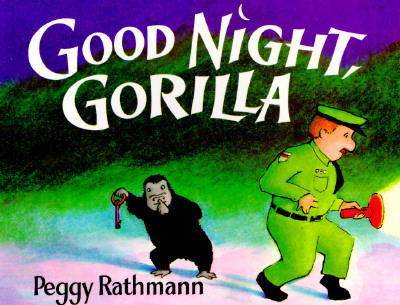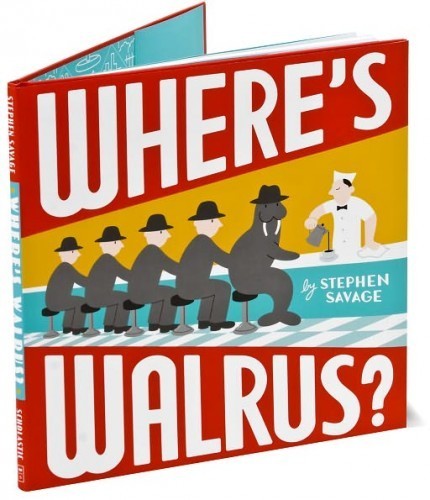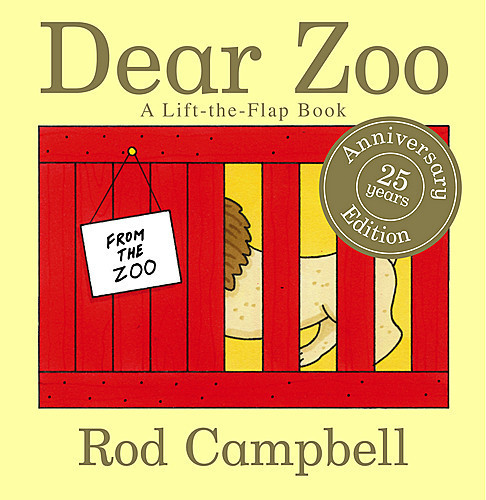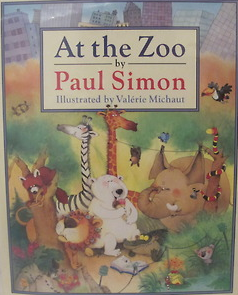Bah. Rabble rousing is too much work. Let’s take a break today and talk about occupations as they exist solely in the world of children’s literature.
These days my little Bird is a bright and sprightly 2-year-old chock full o’ glee. Reading through her books with her, I recently noticed that certain jobs come up over and over again. Policemen certainly. Firefighters obviously. And then there are the zookeepers. Zookeepers, insofar as I can tell, are the much maligned, too little appreciated tenders of the animals in our books. When kids say what they want to be when they grow up, how often do they say they want to be zookeepers? One would think it would be a HIGHLY popular future occupation. Perhaps how zookeepers are presented in books for kids holds the key.
First off, I was surprised in my research to find shockingly few zookeepers starring in their own books. There’s Zookeeper Sue by Chris Demarest, of course. This is one of the rare female zookeepers you’ll find in books that aren’t nonfiction. For the most part, they’re bumbling, incompetent, or they have a cold. The usual suspects include:
Good Night, Gorilla by Peggy Rathmann

Our zookeeper in this particular case falls into the bumbling category. How else to explain his inability to notice/hear/smell the small army of animals that follow him on padded feet out of the zoo and into his own bedroom? Goodnight, Gorilla is notable here in part because it’s one of the few books that shows a zookeeper’s home life. As the animals walk down the hall there are multiple portraits of the zookeeper and his wife (whom I am convinced may well be a zookeeper herself) pose with various beloved animals from over the years. And lest we be too hard on this zookeeper, we should note that his far more observant wife also falls prey to the gorilla’s mischief and seems unable to sense the furry interloper who has snuggled under the sheets between herself and her mate. One imagines that the wake-up moment of realization in the morning is going to be epic.
A Sick Day for Amos McGee by Philip Stead, illustrated by Erin E. Stead

The most sympathetic of the zookeepers in our array today. Part of the charm of this book lies in the fact that it’s clear that Amos and his rounds at the zoo are mostly done for moral support. The animals, when called upon to do so, are perfectly capable of leaving their cages and hopping the next bus to Amos’s home so as to “help” him heal up (this would be the same kind of “help” you receive from a small child who wants to aid you in a complex activity). That Amos meets his animals’ emotional needs sets him apart from the pack. Most zookeepers tend to treat their animals like chattel. Case in point . . .
Where’s Walrus? by Stephen Savage

Ah. Now here we have zookeeper as police. After all, one of the regulars has escaped and must be brought to justice ASAP! Along the way the zookeeper comes to understand that the walrus may indeed have a higher calling. Certainly he’s master of disguise. If that diving champion thing doesn’t work out the zookeeper could consider renting out the walrus to the secret service.
Dear Zoo by Rod Campbell

Admittedly the zookeepers are never shown in this book. They just bide their time by sending the protagonist every animal in their vicinity. Sort of a form of laissez-faire zookeeping, I would say.
And now the strangest zookeeper in the mix:
At the Zoo by Paul Simon, illustrated by Valerie Michaut

Don’t you go thinking that picture books that adapt song lyrics as text are a new phenomenon. Oh no siree bob. Back in 1991 our nation’s bookshelves saw the adaptation of that old Simon & Garfunkle song. It’s a rather odd adaptation, though a logical one. I’m surprised they haven’t given it another shot with a new illustrator today. The lyrics weren’t changed but the illustrations did make some allowances. The zookeeper is now very fond of Rum the beaver. True story.
Have you zookeeper loves of your own that you remember with fondness? I know I’m missing somebody obvious.

 newest »
newest »
 newest »
newest »
 Arnold Lobel's two Mister Muster books! Delightful!
Arnold Lobel's two Mister Muster books! Delightful!










